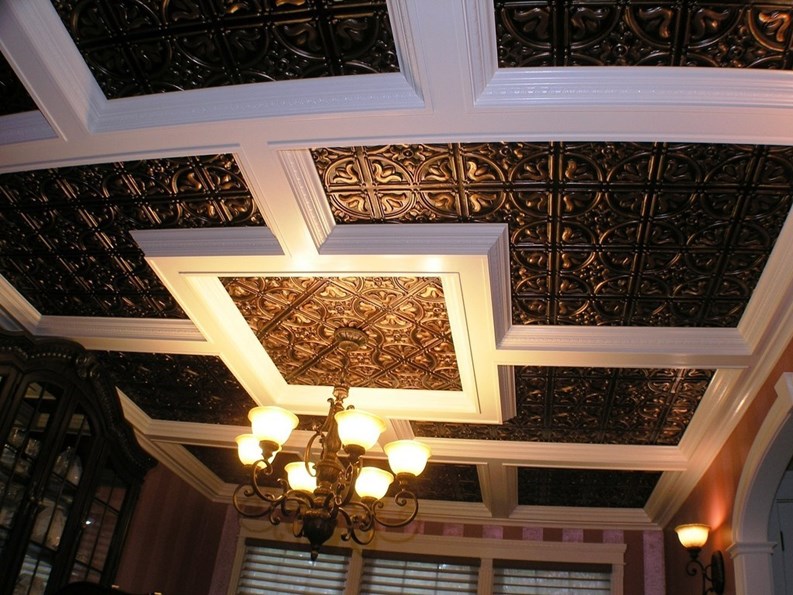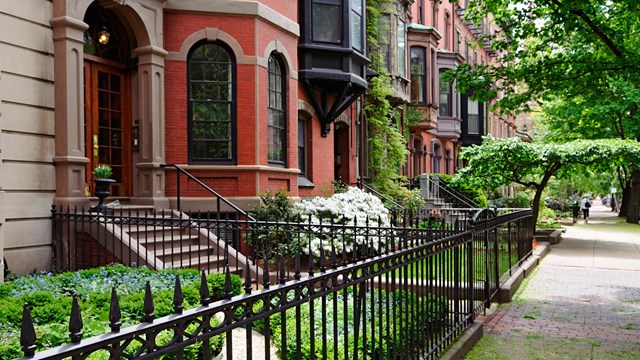The U.S. Environmental Protection Agency (EPA) estimates that 136 million tons of construction and demolition waste was generated in 1996. That's the last time these figures were made available, and the numbers have almost certainly risen in the 15 years since.
The data shows that the majority of the waste came from demolition and renovation, while the rest came from new construction, with less than 30 percent of that waste salvaged for recycling.
Today, architectural salvage—which in simplest terms is the reclamation or reuse of architectural materials—is gaining popularity in our more environmentally-conscious society.
A Win-Win
Remodeling with secondhand building materials has many fans. Some are owners of historic houses who improve their homes by adding period elements. Others follow green building practices and appreciate conserving resources and keeping materials out of landfills. And still others are looking for quirky elements that will break their homes out of cookie-cutter molds.
Materials used come from salvaged elements from buildings slated for demolition, including homes, churches and commercial properties and may range from aged barn wood flooring, furniture, doors, and marble fireplaces to claw foot tubs, ornate radiators and handcrafted decorative hardware.
“The advantage of using reclaimed materials is that you’re getting a higher quality piece of something that may have been made over 100 years ago,” says Bill Raymer, the owner of Restoration Resources, an antique and architectural salvage company in Boston. “And in some cases it’s less expensive. But if you use reclaimed materials it will be unique and different. For example, you can take a piece of a 100-year-old stained glass and hang it up in front of an outside window and you’ll have light and add beauty to the room.”
You also get an authentic piece of history, rather than a watered-down copy. The salvage and reuse of building materials helps to preserve historic and antique fixtures, furniture, and building materials, prevents more waste from entering landfills, and reduces the consumption of new resources.
Salvaged masonry materials also give buildings a historic look. Using antique brick in a new project or remodeling job will create a space that conjures up the feeling of a century-old structure, even in a brand new installation. “You can recreate antique elements, but it’s not the same,” says Steve Feldman, president and founder of the Greenwich, Connecticut–based Green Demolitions, which recycles luxury kitchens, bathrooms, appliances, architectural elements and home décor.
Nothing New
Designers have known about this decorating secret for decades, but it has more recently come into fashion in the past 20 years or so. Zaborski Emporium in Kingston, New York has been operating for 15 years, but the family has been involved in the business for almost four decades. “We work with designers, architects and private individuals on a regular basis,” says Sandy Balla, one of the operators of Zaborski.
“Most of our customers are home owners, business owners, architects, designers, decorators and do-it-yourselfers, there’s a whole mix of people looking for these materials,” Raymer says of his 26 year-old business in Boston’s South End. “Usually they are restoring a house and looking for something from a certain period. Sometimes they are just looking for pieces to incorporate into a new condominium or loft. Lots of people mix modern décor with an antique piece. That seems to be a trend around here.”
Raymer’s 7,000-square-foot showroom and warehouse is filled with ornamental building elements, vintage statuary, choice old house parts, hardware and fixtures, all unearthed from historical sites, period homes, Beacon Hill Brownstones, unusual buildings and churches throughout New England. “We get a lot of things from contractors and demolition things,” says Raymer. “We also get a lot of calls from homeowners who have things that may have been sitting around in a basement or garage for a number of years and they’re not going to use it so they decide they are going to recycle it.”
This and That
When it comes to materials, almost anything that comes from a home can be reused, especially kitchens and bathrooms that are ripped out for demolition or remodeling.
“People have a use for almost anything, as long as it hasn’t been trashed,” Balla says. “Whether it’s architecturally beautiful or not, it may just be utilitarian for a while in a home, and then stuff will get ripped out again.”
Balla says that even items you may think would never sell definitely do sell, as there is a buyer for everything.
“The thing that cracks me up is mid-century,” she says. “Not 1850s mid-century, but stuff from the 1950s and ’60s, like an all-pink bathroom. You wouldn’t think people would want that, but people are buying houses that have been modernized and they are putting it back in because they think it's old,” Balla says. “They want an aqua bathtub! It boggles the mind that people are interested in that, but that’s what they remember as children, and so it sells.”
Feldman believes that different styles are always going to be relevant; it’s the matter of just finding the right people. “We have three different stores in three different markets. Different people have different tastes, styles and budgets,” he says. “Someone’s taste in a Manhattan apartment may be different than their taste in a summer home.”
The items used don’t have to be used for what they were designed for, either. Many of the ornate or unique things are used as standing art or for some other purpose.
“We sell a lot of architectural salvage material to people [who are] using it for something other than it was intended; it’s like it becomes ornamentation,” says Raymer. “For example, let’s say you buy a condominium and it’s sterile or white washed. You can take a fireplace mantle and put it up against a wall, and you can use it as a decorative piece or as a shelf. You can also take decorative antique elements, columns, old brackets from the outside and put them on the inside of a house, add them to the décor.”
Time and Patience
Someone looking for the perfect reclaimed item for their home is probably not going to just walk into one of these businesses and walk out five minutes later with exactly what they were looking for. Those interested in an ornate wood mantelpiece or a specific set of Victorian doors have to be willing to compromise on some of the details and commit some time to the endeavor.
“I tell people before they come to the store to wear comfortable shoes and eat a good lunch, because they could spend hours looking around,” Balla says, referencing her 40,000-square-foot, four-floor building. “We will work with those who are very particular. Some people try matching specific hinges; it’s not enough that they are ornate, they are willing to wait and spend time looking for the exact ones.”
If the items needed aren’t available, most of those in the business will keep a list of what people are after and call if and when those items make it to the store.
The key for success seems to be persistence and the ability to be a little flexible.
“I keep a list but the people who call me once a month are the ones who get what they are looking for,” Balla says. “Right now, someone is looking for a half-round window and they are in the book. For people that need bluestone in quantity, cut the way it used to be cut, there is a waiting list.”
Green Demolitions offers a website of items, including a special section on last-minute arrivals. “For example, we just got in a historic fireplace mantle,” says Feldman, “and you never know what we’re going to come across. It’s up to consumers to keep checking. We do have a sales team to get back to people, but most consumers come on every day to see what came in as its constantly updated. It’s first come first serve, so you need to buy before you lose it because there may never be another one of whatever it is again, especially at that price point.”
Advantages Abound
Green Demolitions was created to earn the funds to support the worldwide addiction recovery outreach programs of the Twelve Step program of All Addicts Anonymous. Through donations, they recycle luxury kitchens, bathrooms, appliances, architectural elements, home décor, and more, all at 50 to 90 percent off. A new donor program called “Renovation Angel” wa started in 2012.
“New York City has so much great stuff being thrown out and that’s where we come in,” Feldman says. “In today’s economic topsy-turvy environment, one of the huge advantages of what we do is price. We received a donation of a quarter-million-dollar kitchen from New Canaan, Connecticut, and a homeowner in Morristown picked it up for $50,000, picking up $250,000 equity in cabinetry.”
Balla agrees that someone can put in a beautiful bathroom by choosing items from her showroom that will be much more unusual than anyone else’s for a price that would probably be 75 percent cheaper than if they were to go the new route.
“If you put in a state-of-the art Jacuzzi, it could be out of style in 15 years,” she says. “But if you add in an old Victorian bathtub that will never go out of style and will help the value in your home.”
In addition to the financial savings and aesthetic perks, the real beneficiary from all these projects is the environment.
“We protect the forestry by not throwing things out, and reduce landfill waste and energy costs,” Feldman says. “When you throw something out in New York, the debris needs to be driven upstate by truck, seven hours away. You’re talking a lot less trips and a lot less waste.”
And that’s the best bargain of all.
Keith Loria is a freelance writer and a frequent contributor to New England Condominium. Staff Writer Christy Smith-Sloman contributed to this article.






Leave a Comment